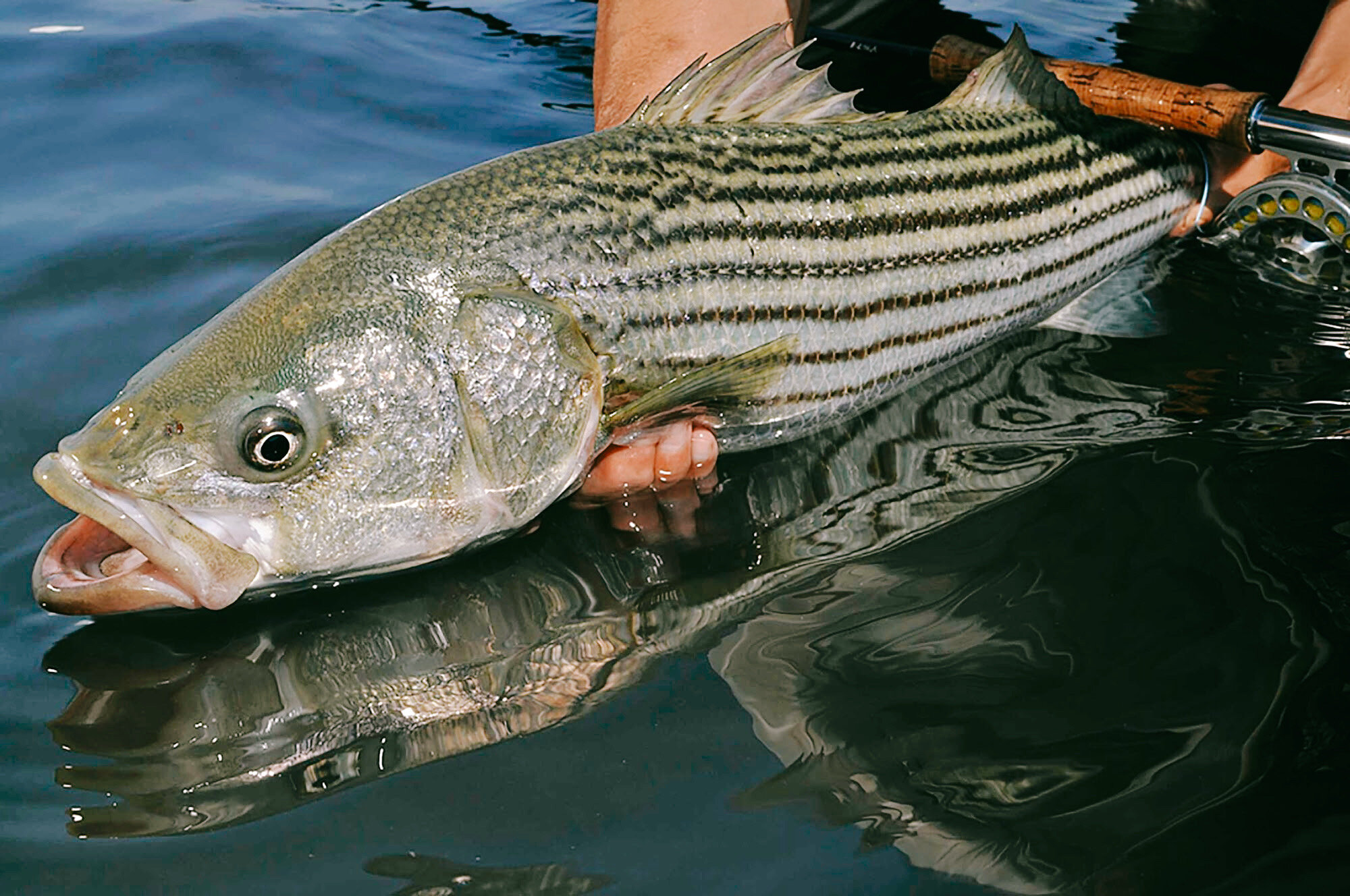
FLY FISHING FOR STRIPERS
FROM SPRING ARRIVALS TO FALL MIGRATION
By: Team Goose Member, Capt. Dave Steeves
Cape Cod is a world class fly fishing destination. Its cold, food enriched waters make it home to the largest concentration of striped bass in the Northeast from early spring to late fall. Its estuaries, tidal flats, sandy beaches and offshore rips offer endless habitat for these beautiful fish to thrive.
Stripers are a smart species, arriving at the same time each year and inhabiting the same locations. In the spring, they migrate to the marshes and estuaries in search of food and warmer water; you will begin to find fish as the water temperatures reach 55 degrees. This is one of the best times to fly fish for stripers because they’re abundant, aggressive, and hungry! Migrating schools arrive daily making the action consistent and predictable, and early season stripers can be reached close to shore by wading, kayak or boat. Fly selection isn’t too critical; a small chartreuse and white clouser or deceiver pattern will work well. An 8 weight rod rigged with an intermediate sinking line is perfect for these 18” to 24” schoolies and occasional keeper.

In June, around the new or full moon, the extreme tides flush baitfish out of the rivers and over the flats. The bigger stripers start migrating along the North shore and South shore beaches. This is the time fly fisherman have to be on high alert. The migration over the tidal flats can be epic! Timing is everything: you will only have a few days to experience the best fly fishing the Cape has to offer.
Fly Fishing the flats is both challenging and rewarding. It’s one of the only places in the Northeast you can sight stripers in shallow, crystal clear water. There can be singles, pods or schools of a thousand or more fish on the flats. Presentation is critical, you must present the fly close to the fish without spooking them. Casting accuracy, distance, and the ability to manage the wind will play a big role in your success. An 8 or 9 weight rod rigged with an intermediate fly line with a 9 foot, 16# fluorocarbon leader is ideal. Using flies that resemble shrimp, crab, or sandeel will be your best bet. You might not necessarily catch a lot of fish, but when you do it will be incredibly rewarding.
Capt. Dave Steeves shows off the rewards of a good day spent on the flats.
As the inshore water temperatures become too warm, the fish seek deeper, colder water, so you will have to target the outer beaches and offshore rips to find the action. The inshore fly fishing options become more limited, but don’t give up on the flats just yet. Focus your attention more on fishing the early morning (day break) flood tide. Stripers are now in their nocturnal feeding mode and the first few hours before light can pay big dividends. Fly fishing the outer beaches and offshore rips can be a lot of fun as well. You’ll need to step it up to a 9 or 10 weight rod rigged with a fast sinking line, a 16 to 20 pound leader will be best. Try shortening the leader to 7 feet if you’re fishing deep, fast moving water. The shorter leader will keep the fly in the strike zone longer. Flies that resemble squid, sandeel, bunker and herring are key. The potential to catch a keeper size striper is much greater as well, so don’t give up!
The fall migration is not as predictable or consistent as the spring, but if you spend enough time on the water you’ll eventually run into a school of fish. Target the outer beaches, inshore flats and river mouths. These are staging areas and prime locations to find feeding stripers preparing for their long migration South. Be flexible, optimistic and persistent and you’ll catch fish!
The Goose Hummock offers a full-service fly department catering to both fresh and saltwater fishing. You’ll find a large assortment of rods, reels, waders and local flies. Stop in anytime for local advice. We also offer a guide service and casting instruction for those who would like to try the sport for the first time.


